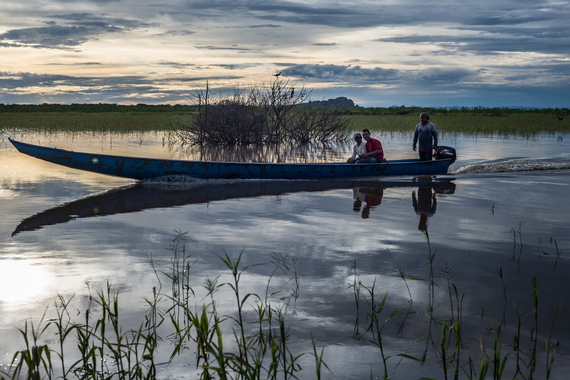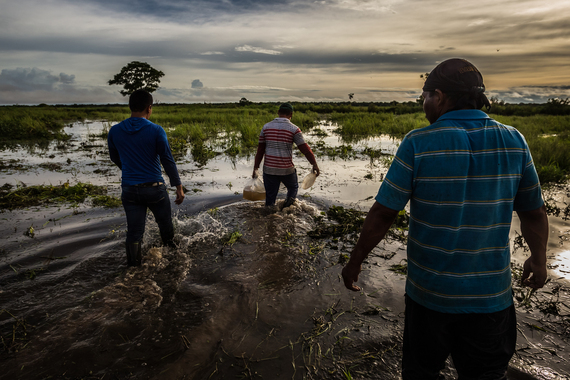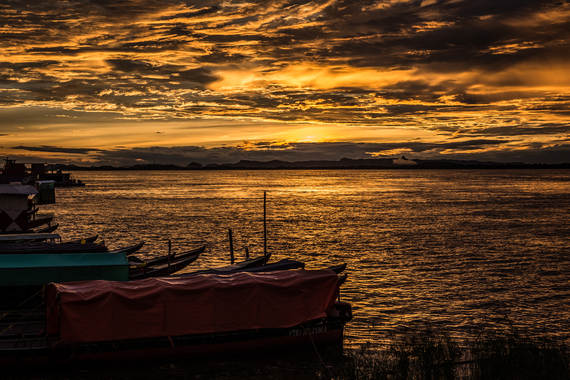It only seems like a New York minute since the 17 Global Goals for Sustainable Development were adopted, but this week marks the one-year anniversary as the UN General Assembly (UNGA) meets in the Big Apple to discuss, among other things, how the implementation of the SDGs is progressing and the obstacles in the way to achieving them.
One year down, fourteen to go - as I said, tick-tock. While I'm watching the clock, I'm also thinking how the global community can keep progress moving in the right direction. Clearly, one major way we can help meet all 17 goals is to invest early in water security.
Contribution deadline
At the High Level Political Forum on Sustainable Development in New York earlier this year, Elizabeth Stuart from the Overseas Development Institute said, "Agenda 2030 implementation is like a pension...the longer you leave paying in, the less rewards you see." Those words struck a chord and got me thinking about how the principles behind 401(k) accounts in the US can also be applied to water security. It's better to invest in protection early and often than have to invest in restoration or other fixes to solve problems later down the line. But, when is the contribution deadline for investing in water and sustainable development? Two, five, or ten years from now when it will be too late? These are the questions we should be asking.
Balancing act
The biggest challenge for the global community in making contributions to the SDGs is balancing the competing uses of water; ensuring that the needs of everyone, particularly the poorest and most vulnerable, are met while maintaining secure and healthy ecosystems. Conservation depends on healthy communities that sustainably manage their natural resources. At the same time, the long-term sustainability of development projects depends on integrating these projects with surrounding ecosystems. When water projects are created in silos, taps run dry; untreated waste pollutes drinking water and habitats; and both large- and community-scale infrastructure fail in the face of climate change. When integrated, these projects help protect freshwater ecosystems, which provide the basis for clean water supply, flood control, food and numerous other services people depend upon.
With this in mind, it's easy to see why water is a recurring theme running through most of the 17 goals. We should look at the water related targets in every goal to ensure that they can be all be achieved through the unique approaches each country will use to tackle them.
Transparency paper or practice?
Another obstacle on the road to achieving the goals is transparency. Decisions about water are too frequently made without adequate information, behind closed doors, and at the expense of basin health and vulnerable communities. We know that when information about river basin health is synthesized and delivered via a practical public platform that everyone understands, stakeholders are empowered to improve decision-making. In an era of data democratization and increased civil activism, we as a water community need to promote tools and processes that bring more transparency and collaboration to water management if we are ever to meet our 2030 deadline.
Basin report cards are a powerful tool for transparency and one of the ways WWF is contributing to achieving the SDGs, working with our partners at the University of Maryland Center for Environmental Sciences (UMCES). Developed from the bottom-up and rooted in science, report cards identify what is most important to water users in a given basin, create a common understanding of the basin's health, incorporate indicators on climate change and resiliency, and foster a shared vision for the basin's future.
These report cards give us a baseline against which to measure progress toward the SDGs and provide data that is essential to meeting them. This data will assure existing funders that their money is being well-spent, and encourage prospective partners to contribute. Finally, because each report card will be a hyper-local effort, community engagement and collaboration across water users are prerequisite. And the best part? You don't have to be a hydrologist to know how the river is doing and where it's headed.
A collective water story
With the UNGA and Clinton Global Initiative, all eyes are on New York this month. Water will be on everyone's agenda, but thankfully the conversations around our global water crisis won't be confined to conference halls and meeting rooms.
To bring the story of our global water crisis to the people, I'm helping launch our new outdoor photography exhibition Water Stories by Mustafah Abdulaziz on September 21 as part of Photoville - using stunning large scale images lit up by the East River at Brooklyn Bridge Park. The exhibition is the result of collaboration with the HSBC Water Programme, in partnership with Earthwatch, WaterAid, and WWF. It also happens to coincide with NYC Climate Week, further highlighting the growing water challenges across America and the world.
Despite the loud ticking clock and the hefty investment that will be needed to achieve the Sustainable Development Goals, WWF's efforts won't stop until we have helped the water community meet the growing global challenges and ensure the availability and sustainable management of water for all.
This post is part of a series produced by The Huffington Post to mark the occasion of the one-year anniversary of the adoption of the Sustainable Development Goals (SDGs, or, officially, "Transforming Our World: the 2030 Agenda for Sustainable Development"). The SDGs represent an historic agreement -- a wide-ranging roadmap to sustainability covering 17 goals and 169 targets -- but stakeholders must also be held accountable for their commitments. To see all the posts in the series, visit here.



